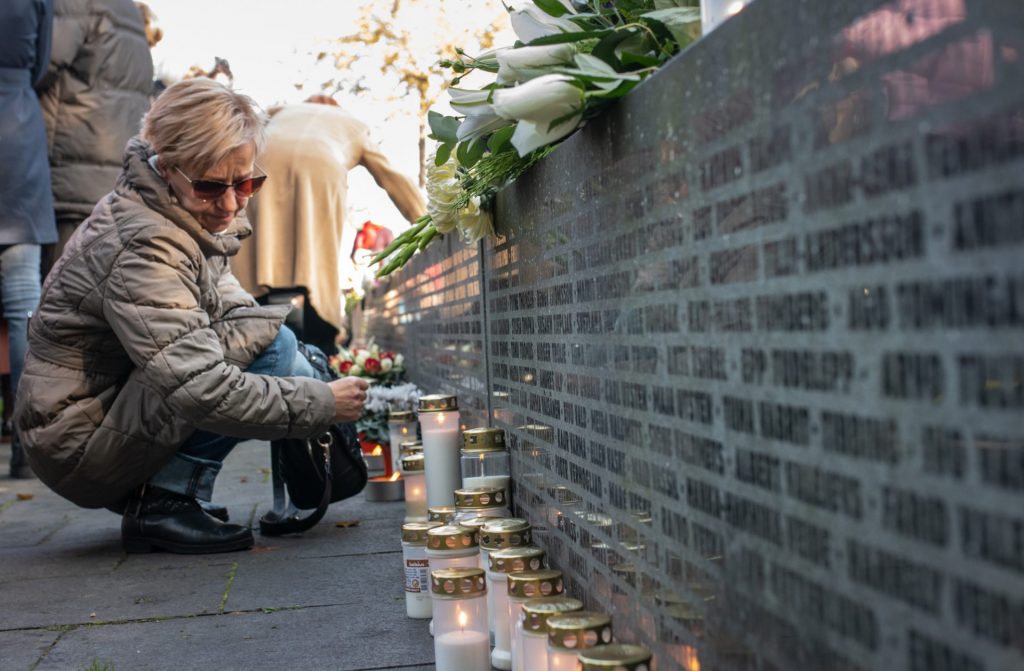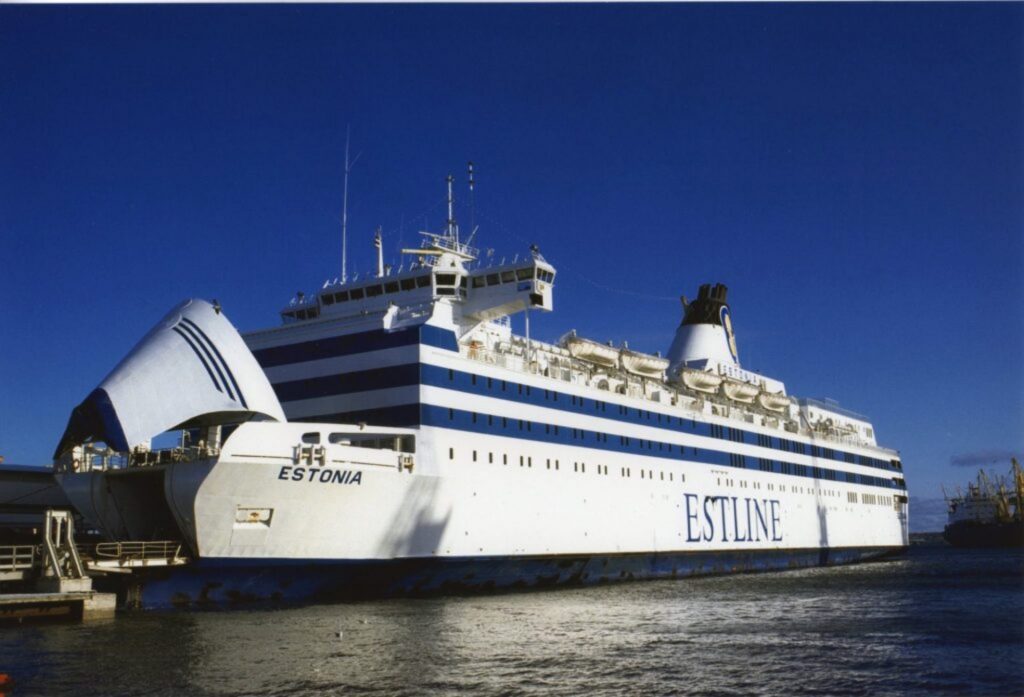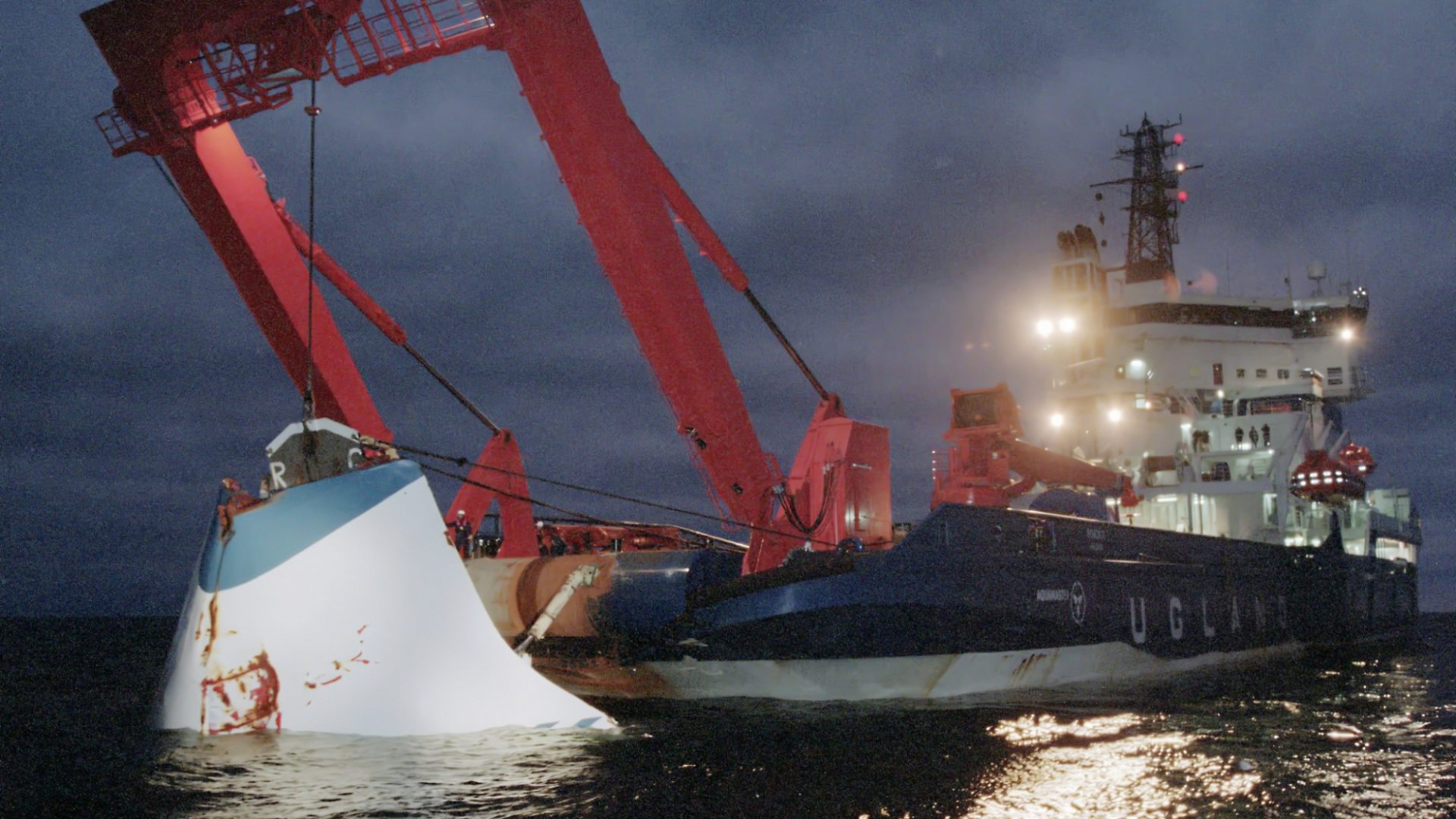When the MS Estonia left Tallinn for Stockholm at 7pm on September 28, 1994, there was no hint of the horror to come. A passenger-and-car ferry, it regularly made the popular nine-hour run between the two capital cities.
Nine decks high, it was ocean-liner sized and had a cinema, casino, swimming pool, three restaurants, three bars and accommodation for 2,000 passengers. There was also a car deck that ran along the full 510ft length. In short, it was the pride of the former Soviet state after which it was named.
Once out of the sheltered waters along Estonia’s north coast, the ship passed through heavy rain and winds that stirred up 20ft waves. Such stormy conditions occasionally happened in autumn and winter and were not considered severe for a ship of Estonia’s size. Just after midnight Estonian time (1am in Sweden), about halfway through the journey, the Estonia was rocked by two loud bangs about 30 seconds apart. Some survivors likened them to explosions, others said it sounded as if the ship was “ploughing through ice”.
Sara Hedrenius, a 20-year-old student returning to Stockholm after visiting her father, was asleep on a sofa in the foyer when the noises woke her. “I thought we’d hit something like a rock, but we were in the middle of the sea and there weren’t any rocks, so I said to myself maybe it’s just a very high wave.”
As the Estonia rolled to port, then starboard a few times, Hedrenius tried to go back to sleep. Then the ship listed heavily to starboard and never righted itself. “I thought this was not normal, and then I was wide awake.”
As glass and furniture shattered around her, instinct told Hedrenius to get outside to the sun deck on deck 7, the nearest exit to the outside, as quickly as possible. Having oriented herself earlier, she knew she had to go up two floors. “I had to be careful, but quick,” she says. “It was very difficult to move because the list was getting worse, and it was difficult to understand how the ship was moving; I had to hold on to something all the time. Sometimes the floor just disappeared from under your feet.”
Many people froze. With just 48 minutes until the ship sank completely, such hesitation was fatal. Other factors were also at play: luck and, starkly, age and gender. Of the survivors, only seven were over the age of 55, none were under the age of 12. Most were 20 to 24. Hedrenius was one of just 26 women who made it out alive.
On the lower decks where the cabins were, the corridors, a confusing rabbit warren at the best of the times, fast became a death trap. As the ship continued to keel over, the world began to turn upside down. Floors became walls and vice versa. Corridors just 3ft 9in wide seemingly shrank in height. Starboard doorways became voids that had to be leapt across, few passengers who fell into the cabins below were able to get back out. Stairwells became virtually impassible, most people simply lacking the strength required to pull themselves up. Screams, fear and chaos reigned.
Outside, Hedrenius climbed over the railings and on to the side of the ship, which was now the floor. There she met a fellow passenger, Kent Harstedt. “It was very difficult to know what to do,” she says. “Then the horn blew and we understood we needed to abandon the ship.” They held hands and the next time a wave came, allowed it to wash them overboard.
In the water, Hedrenius was pulled down by something caught on one of her feet. She panicked, imagining her parents having to attend her funeral. Then, suddenly, she was free and floated to the surface. Along with Harstedt, she made her way to an overturned life raft, already half full, and they were pulled on board.
When they were winched to safety by a coastguard helicopter about five hours later, only four of the other 14 people were still alive. The rest had either drowned or frozen to death.


Of the 989 passengers and crew, just 137 survived, making it Europe’s deadliest peacetime sinking. There were victims from 24 countries, including the UK, but the casualty list was dominated by Sweden, which suffered 501 fatalities, and Estonia, which suffered 285. The tragedy inflicted a deep psychological wound on both nations.
Sweden was in a phase of political transition following a general election less than a fortnight earlier, but both the outgoing and incoming administrations united in promising to raise the ship, which was lying in relatively shallow waters just 80 metres down, and recover the victims. “We were happy with that for a few days, maybe a week or so,” says Lennart Bergland, who lost his mother and father-in-law in the tragedy, “but then it changed.”
Although a deep-sea investigation determined that it was feasible to raise the wreck, the government announced in December that it no longer intended to do so. Instead, it was going to cover it, first in 25,000 tonnes of gravel, then in 12 inches of concrete, to create an impenetrable sarcophagus. “That was a very strange way of taking care of it,” says Bergland, who helped to set up SEA, the Swedish Estonia relatives association, in response.
The plan was ultimately aborted, but the subsequent government investigation did little to quell the disquiet. It determined that the cause of the tragedy was mechanical failure, leading to the ship’s bow ramp and bow visor being ripped off in the storm and the ship taking on huge amounts of water. But many believed the report to be a whitewash. Victims’ families felt that the speed with which the ship sank was consistent with a collision, perhaps with a submarine. “It must have been something else because of the way it went down,” says Berglund. “Experts said this for many years, it must be a hole somewhere under the waterline.”
Significantly, none of the survivors had been interviewed for the investigation. “It was not consistent with what we experienced,” says Hedrenius. “So, we sent a letter to the government saying we are really concerned about this, that we can see there are some mistakes in the report. We never got a reply.”
“The official investigation was so poor, it’s hard to believe those investigators or the government accidentally happened to carry out such a bad investigation,” says Margus Kurm, a former Estonian public prosecutor, who headed an investigative committee into the tragedy between 2005 and 2009. “They did not really want to look into some important questions. That’s why I thought, and still think, there are people who know what happened, not only the direct cause of the accident, but also everything that may have been connected with it.”
Kurm’s involvement was prompted by the claims of Lennart Henriksson, the former head of customs in Stockholm, in 2004 that the ferry had been used to smuggle stolen military hardware from the former Soviet Union to the west. An investigation by a senior Swedish judge found that the Estonia had indeed carried such cargo twice in the fortnight before the tragedy, although supposedly not on the night in question.
Again, this did not tally with what survivors, including Hedrenius, witnessed. “There were vehicles going very fast, escorted by motorbikes. They were clearly military trucks.”
Kurm, who interviewed many of the customs officers working on the day, says there is no evidence these trucks were military. “But this doesn’t mean there was no military cargo on board,” he says. “Such cargo would have been transported in a very secret way, not with military-looking trucks.
For Berglund, questions remain. “What was in the cargo on the night of the accident? The ship had been transporting military equipment and, as we see it, that means it was a military target.”
Over the next 15 years, wider public and media interest dissipated. Then in 2019, a Swedish film crew found a hole in the side of the ship consistent with a collision. Their finding prompted further official investigations, which concluded the damage was caused when the ship hit the seabed.
“It took 25 years before somebody found the hole, and now they have found it, they are trying to claim that it happened when it hit the bottom,” says Berglund. “They still need to explain the rapid sinking sequence.”
Despite his scepticism about the official investigations to date, Berglund says he would settle for any believable explanation as to why the ship sank as quickly as it did without a collision. However, he is adamant about what must happen for the relatives of the victims and Swedish society to truly be able to leave the tragedy behind.
“The only way to get final closure of this is to recover the ship and the victims,” says Berglund. “It’s not too late.”
Roger Domeneghetti is a writer and lecturer at Northumbria University



